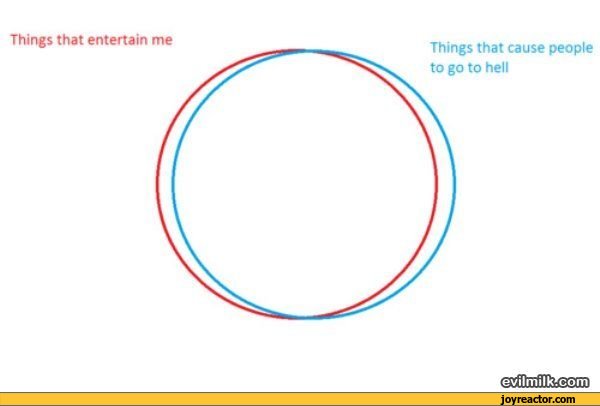-
Posts
436 -
Joined
-
Last visited
Content Type
Profiles
Forums
Character Archive
Frequently Asked Questions
Equestrian Empire Character Archive
Golden Oaks Memorial Library
Pony Roleplay Characters
Events
Blogs
Posts posted by Velcorn
-
-
Just started studying biology today

Same
-
Hell yeah.
Same
-
 1
1
-
-
404 question not found.
Pizzar or burgers?
-
Not Kanye West... I don't have one... Maybe Kollegah? I don't listen to solo singers...
Same
-
Let's see, it's been some time since I last posted here.
I still love my dolphin plushie, Lucy, to death <3
I'm still suffering from anxiety and panic attacks even though I don't really have panic attacks anymore

I might have developed depression but I'm not sure. I'm pretty much reluctant to get or even accept help, anyway.
I'm really stubborn in general and I rage quite a lot when playing video games.
I really disliked humanity whilst liking certain individuals.
I don't really like talking to people because most of them have vastly different interests and opinions than me.
I guess there are countless more things I can't think of right now.
-
"Quantum" basically means "the smallest thing that can be examined in a system". The quantum measurement of the carrying capacity of freight ships is displacement-tonnes. The millimeters' gauge or 1/16th inch gauge on your elementary school straight-edge is the quantum measurement of that straight-edge. When Quantum measurement is applied to particle physics, then it comes to measuring things on the scales of Angstroms (fractions of the width of a single proton) and the movement of subatomic particles like quarks. I think you're mistaking "randomness" for either the Heisenberg Uncertainty Principle, or the Observer Effect. The Uncertainty Principle in a nutshell says that the more precision you know about the position of a particle, the less sure you can be sure about its speed, vector, momentum, etc. and vice versa; the more that's known about a particle's vectors, the less you can be certain about its position. This is often bluntly summarized as "you can't know the location and the momentum of a particle at the same time". The Observer Effect is famous through Schrodinger's Cat Paradox. Until a particle is observed, it will vary in a number of different possible locations. When the particle is observed, its position collapses from a number of potential locations into a determined state. The Cat Paradox is an anecdotal description of this phenomena with an illustration like this: "A cat and some poison is placed in a box, and then the box is closed. The cat may die of the poison, or it may not. However, the cat effectively is both alive and dead until the box is opened and the state of the cat is observed."
I'm familiar with both, the uncertainty principle and Schrödinger's cat thought experiment. Apparently, I have been wrong in my interpretation of the uncertainty principle. I would've guessed that since matter behaves like a wave and a particle at the same time, its movement couldn't be predicted because we can't measure its position and momentum at the same time, making the movement random.
This neat article explains pretty understandable what I meant and in how far I was wrong, probably. http://www.askamathematician.com/2012/06/q-if-quantum-mechanics-says-everything-is-random-then-how-can-it-also-be-the-most-accurate-theory-ever/
Does this make the assumption correct that everything probably does happen for a reason, even if we might not be aware of why something happens? Or does it still leave the possibility open that everything, in fact, happens randomly. Depending on one's viewpoint, both might be possible. After all, it might come down to one's perspective in general.
P.S.: I was about to assume your MBTI type and then looked at your profile where you stated to be somewhere between an INFJ and ISTJ. I would've guessed you to be an NT, possibly INTJ or INTP
 Seems like I was wrong ^w^
Seems like I was wrong ^w^ -
Something in between but it's pretty clean in general.
Same.
-
I sleep with my dolphin plushie, Lucy <3
However, I have several other plushies in my bed with me. Among them is my Sea Swirl plush :3
-
There are four fundamental forces which bind normal kinds of material together, in basic atomic chemistry: Ionic, Covalent, Metallic and Van Der Waals.
Ionic bonds are the strongest, where electrons are shared between the orbitals of two different elements. These kinds of bonds are present in ceramic materials like concrete, glass and gemstones. These bonds result in extremely strong, but typically very brittle materials (not very bendy) with very high melting points. The exemplar of this sort of strength is Diamond. Ionic bonds are always between a metal and a non-metal.
Covalent bonds are made between non-metal elements, where ions are shared between atoms of the same kind. These bonds are responsible for every kind of organic chemistry, from gasoline to sugar to DNA to rubber to peppermint to xylene. Their characteristics vary wildely, but often have it in common that they have low ignition points (they burn fairly easily) and are often flexible, elastic or ductile in solid form.
Metallic bonds are weak but durable. Basically large stacks of the same kind of element coalesce together in giant rigid piles, with seas of electrons floating between them. They are often very strong and proportionately better at being flexible than ionic bonds (think iron vs. pottery), and the best of any kind of bond at being heat or electrical conductors. This is because when an electron strikes the side of a metal, it hits the sea of electrons and knocks another electron out on the other side. Metals can also be very dense. Gold is both the most conductive element and the most ductile, Osmium is the densest, and Unonoctium is the heaviest.
Van Der Waals are tiny. And before you can understand what they are, you'll need to have a bit of understanding for how electrons behave.
If you've ever been given an impression of what electrons are like, you probably thought of them as tiny balls of light whipping around the nucleus of an atom like lightsaber-style planets orbiting a lumpy star. This mental picture is useful for many kinds of Chemistry, which it's why it's still around. It's called the Bohr Model. However, it breaks down when you're trying to explain Van Der Waal force. You need to understand the Probabilistic Model.
The Probabilistic Model says that you can't "find" where an electron will be-- which makes sense, since they're such infinitesimal things, and they're moving at the speed of light-- but you can predict where they'll probably be at a given moment. So you assign "clouds" of probability which dip and bob around the nucleus, indicating where electrons will most likely exist at any given point in time. With this understanding, you can then imagine what it would be like if, for the briefest of moments, all of the electrons around an atom were located on one side of the nucleus. This would actually push the atom in a direction, like a rocket engine. Granted, it wouldn't push it very much: the force is minuscule and the time it happens is ever-so-brief, but the force is there.
It's a bit like molecular static-cling. Van Der Waals are responsible for the flexibility of shoelaces and plastic bags, among other things.
Secretly, I've influenced you to know the four standard Engineering Materials definitions as well: Ceramic, Metallic, Polymer and Hybrid.
I wouldn't really call this random facts, it's basic chemistry

According to what I'm making out of the current knowledge we have about quantum mechanics, everything happens randomly.
-
I'm sorry, I'm rather monogamous :S
-
*deleted for privacy reasons*
-
 10
10
-
-
Samsung, even though I recently switched to LG in the mobile phone area.
Same.
-
*Deleted for privacy reasons*
-
 8
8
-
-

This accurately sums up my humor

-
 1
1
-
-

I still like the fuzzy cute things. I have like 10+ spiders in my room and they take care of some bothersome insects and I think they are cute. The webs can be annoying sometimes, though

-
 1
1
-
-
Jesse, let's cook! Oh, you meant the other cooking, right? Nah, I don't

Same.
-
None, I like being human. Unless I could be a dolphin, then I'd be a dolphin!
What (non-human) animal would you want to be?
-
I think I will now consider myself pansexual just for the sake of it. I will pretty much never end up with a guy but it's not like I think it's impossible.
-
"Into the wild" might not really be a survival movie but it is unbelievably interesting.
Favorite movie?
-
I'm not so much into Pandas, but whatever :3
-
-
I can't stand arrogance and ignorance.
What is your MBTI type?
-
INTJ, apparently. On the pony chart that makes me like Celestia? Curses.
The pony chart seems very inaccurate to me. Twi is definitely INTJ instead of INTP. Celestia doesn't seem to be INTJ at all. She's more like INFJ or maybe she fits INTP.
-
I'm an INTP but the MBTI isn't really accurate. It is a good indicator to roughly guess the personality of a person by knowing their MBTI-Type but nothing more, in general. There is a reason it is of no value in scientific psychology.
I'm surprised how many INTP and INTJ people there are here considering they are the rarest in general...




Answer the question above you.
in Forum Games
Umm, Supernatural.
Same